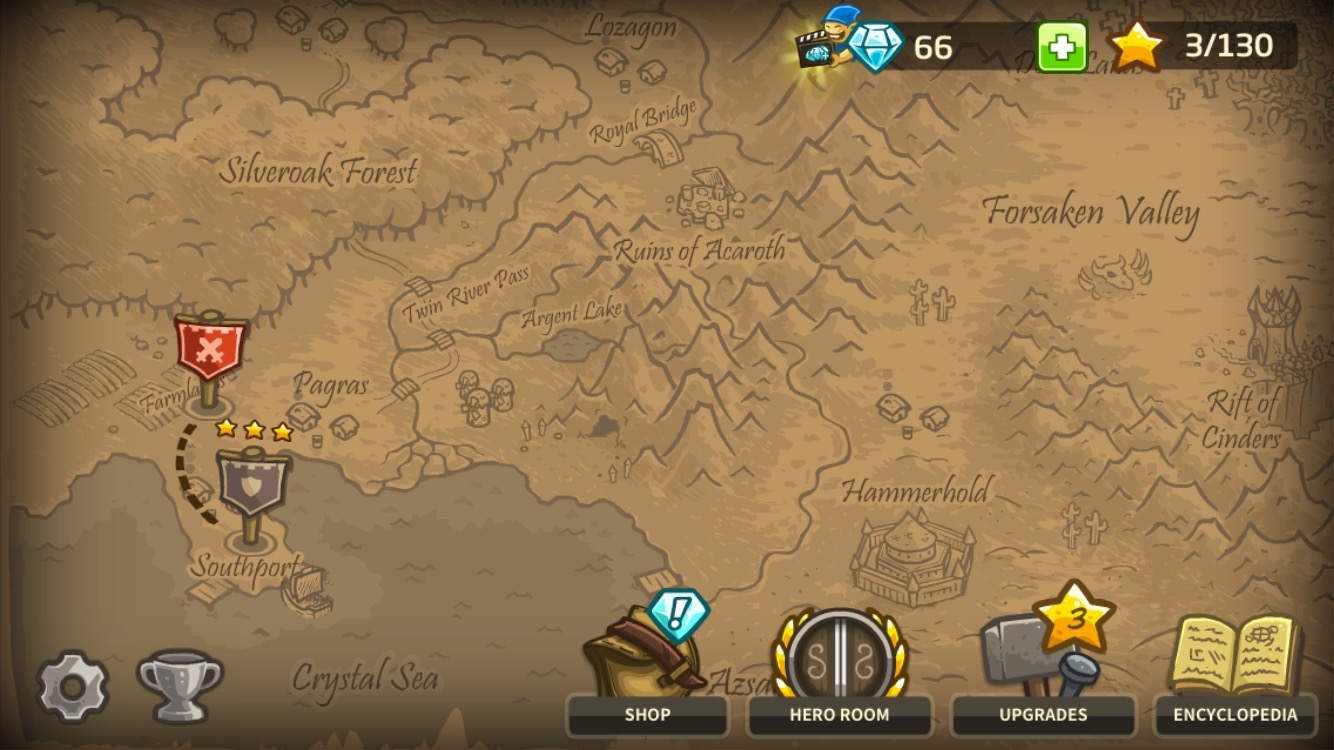For this Critical Play, I played Kingdom Rush and Battle Cats, both of which are Tower Defense games. I found that because Kingdom Rush incorporated many more of its resources, design elements, and mechanics into its theme than Battle Cats did, Kingdom Rush was a much more immersive and satisfying game than Battle Cats.
Kingdom Rush, by Ironhide S.A., begins with the player being given the role of a general in charge of defending their kingdom (Figure 1). Then, during the actual Tower Defense game, the player chooses between various European-Medieval-Fantasy-inspired defenses (e.g. Mage towers and archer towers) to ward off goblins and orcs who are trying to invade the kingdom. The player receives gold for killing monsters and uses this money to build more towers. The towers, monsters, and background music all support the theme of Medieval Fantasy. Even the gold coins used to buy towers fit in the theme, as Medieval Fantasies often use gold as currency. I also enjoyed the world map (Figure 2) that the player sees between levels of the game, as it contains landmarks like “Ruins of Acaroth” and “Forsaken Valley” that play on tropes of Medieval Fantasy. By consistently using its design elements to support its theme, Kingdom Rush successfully immerses the player in the game world and thus even induces the player to feel responsible, as a general, for the wellbeing of their kingdom. Thus, the game cultivates a Fantasy aesthetic on top of the Challenge aesthetic that is inherent to the Tower Defense genre.


Battle Cats, by ponos corporation, opens with a long monologue about the game’s creator (Figure 3). This perhaps sets the whimsical tone of the game, but it misses an early opportunity to world-build–an opportunity that, as I have explained above, I think Kingdom Rush used well. During the Tower Defense portion of Battle Cats, the player takes on the role of the commander of a cat army that is invading real-world countries, such as Mongolia. To store money to buy cat soldiers, the player has a wallet (Figure 4), similar to the gold stash in Kingdom Rush. However, in Battle Cats, the wallet is not incorporated into the theme of the story–I found myself wondering what need these battling cats could have of currency. I would have been more satisfied with the world-building of the game if the currency had been consistent with the theme–if it had been canned tuna, for instance, instead of cash.
Because of its theme of invading, rather than defending, Battle Cats requires the player to scroll through the screen to push their cat soldiers onwards into enemy territory. However, since the origin point of the cat soldiers remained stationary, I found that the more I scrolled, the longer I would have to wait for my cat soldiers to appear on the screen after I bought them. I found this to be annoying.




